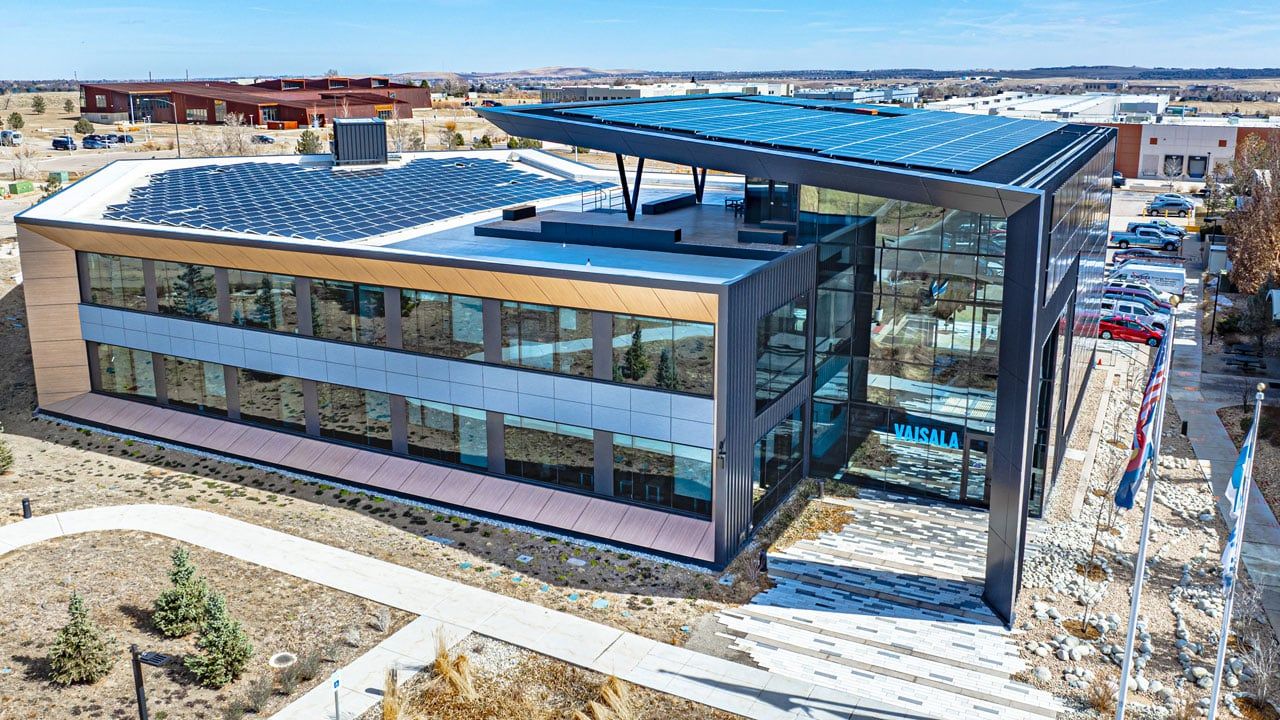CSU project to help livestock producers improve air quality
The U.S. Department of Agriculture’s Natural Resources Conservation Service recently awarded the project about $370,000 through its Conservation Innovation Grant program. It was the second stage of funding for the project, which previously had received nearly $1 million from the USDA and partnering organizations.
Researchers at CSU and collaborating institutions have been developing an online air quality assessment tool for the past four years.
SPONSORED CONTENT
Commercial Solar is a big investment, but not an overwhelming one
Solar offers a significant economic benefit for commercial property owners while also positively impacting the environment and offering a path to compliance for new municipal requirements like Energize Denver. A local, experienced solar installer will help you navigate the complexities of commercial solar to achieve financial success for your project.
CSU faculty in the College of Agricultural Sciences will use the new funding to refine the online tool – called the National Air Quality Site Assessment Tool – which allows producers to assess air quality surrounding their operations. The tool also allows them to pinpoint emission types and sources and to consider costs and benefits of emission-control strategies.
Agricultural emissions include dust, odors, methane and ammonia.
In Colorado, work on the project is particularly significant in light of concerns that ammonia emissions from livestock operations are contributing to nitrogen deposition in Rocky Mountain National Park.
“Managing emissions from livestock operations is an environmentally sound practice and a financially sound practice,´ said Shawn Archibeque, assistant professor of animal sciences who is leading the project. “That’s because nutrients emitted into the environment are nutrients that were not captured in a saleable product, such as beef, pork, milk, eggs or poultry.”
The project is important because it provides livestock producers with strategies to proactively address air quality, said Bill Hammerich, Colorado Livestock Association CEO. The association donated $25,000 to initiate the project, and members representing the dairy and cattle-feeding sectors are helping to test the tool.
Western United Dairymen and the Iowa Pork Producers Association are among industry groups involved in the project, along with researchers at a dozen other universities.
“We want to not only do a better job of estimating emissions from livestock operations, but of helping livestock producers mitigate emissions through best-management practices,´ said Jay Ham, a CSU professor of environmental physics who is working on the assessment tool.
“It makes sense to take care of these things proactively.”
For more information on how the online National Air Quality Site Assessment Tool works, visit http://naqsat.tamu.edu.
The U.S. Department of Agriculture’s Natural Resources Conservation Service recently awarded the project about $370,000 through its Conservation Innovation Grant program. It was the second stage of funding for the project, which previously had received nearly $1 million from the USDA and partnering organizations.
Researchers at CSU and collaborating institutions have been developing an online air quality assessment tool for the past four years.
CSU faculty in the College of Agricultural Sciences will use the…
THIS ARTICLE IS FOR SUBSCRIBERS ONLY
Continue reading for less than $3 per week!
Get a month of award-winning local business news, trends and insights
Access award-winning content today!

